Knowledge from Olle Garden Bed: Things You Don’t Know About Apartment Gardening
You can dream of living with an acre of land on a small farm in the countryside. But if you live in a small apartment in the city, like so many people, your dream may be far away. In this guide, you will be instructed how to start gardening in your apartment. Of course, in this case, our raised garden bed may not be useful.
What is apartment/city gardening? The reality is that most people in the world live in cities and towns, and there are still more urban residents. Not everyone can become a farmer. However, this does not mean that we do not cook our own food. Everyone in their apartment can start a small "garden". In fact, everyone needs to do so.
If you want to live longer, this is a good place to start developing at least some of your own food. It is a good idea to find distribution and community gardening in your area, so that you can get some land for food production.
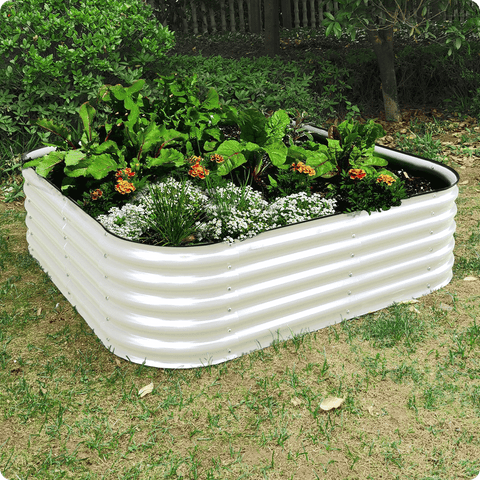
You can also contact the Council or local landowners to start your own plan without such opportunities. Can you and your neighbors even build a garden on the roof or in the community area?
In France, the law actually stipulates that solar panels or factories should cover all new roofs.
You can still start a small garden in your apartment, even if these options are not feasible, you may start to take care of your food.
Why should you start gardening in your apartment?
Only a small indoor garden can be beneficial to people and the world. You may wonder how much a very small garden can do. Advantages:
- Happiness values
Although all plants produce oxygen and carbon dioxide is extracted, do you know that some plants can clean the air?
According to NASA's Clean Air Report, plants such as Peace Lily and Spider Plants are low care household plants that can eliminate all forms of pollutants in the environment, such as ammonia (present in various household cleaners) and formaldehyde. We will soon enter more such factories.
In cities, haze is not the only problem of air quality.
Indoor air pollution is also common (or more, if not more common), which not only increases the risk of various health conditions, leading to "sick building syndrome" (similar signs of cold caused by dry and polluted indoor air). According to Sydney University of Science and Technology, only three to six factories will significantly reduce this risk factor.

- Natural reconnection
In addition to the true health benefits of plants, nature also offers great emotional and spiritual advantages. Plants add nature's positive and soothing effects to your home. In fact, University of Michigan research shows that they are improving efficiency, creativity, cognitive output (up to 20%!), and retention of memory.
Flowers in particular have been shown to improve mood. Horticultural therapy for patients with dementia, schizophrenia and depression is also used as a complementary treatment.
- Saving and safety
Reduce the purchase of food from unhealthy monoculture.
Reduce food mileage and carbon dioxide levels.
Recycling and storage of household kitchen waste.
If you plant some food in your house, it can also save you money.
- Drug price
In the long run, planting useful plants will save you money.
In addition to growing food such as herbs and vegetables, all types of plants can also be grown, which can be used for medicinal purposes.
For example, echinacea and chamomile will develop immune tea. Make mint and lavender essential oil, and use aloe to make various DIY recipes.
Improve the air quality of yourself and the earth by increasing the number of plants in the world.

Similarly, according to the Sydney University of Science and Technology, indoor plants alone minimize about 10% of carbon dioxide in the air. In order to offset more carbon, additional CO2 is consumed by plants, such as bamboo.
- Responsible waste disposal
Composting, such as waste food and paper products, is an incredible way to deal with organic waste. And because technology makes it more usable, you don't need to use huge batteries in your backyard. You can do the right thing in a comfortable kitchen and provide a complete waste disposal system with your own garden to supplement your compost bin.
The best choice of plants you should plant in the apartment gardening
To some extent, you can grow almost any plant in a pot. For example, it may be difficult to get a full-size apple tree, but the thin column is suitable for the 1 square foot corner of the balcony.
Think about what you want to eat, then choose some plants to try out your apartment garden. Start by providing more varieties and lower cost seeds. Your garden will be built earlier, even though it was built by pupils.
Narrow, dry or too wet rooms prevent you from dreaming of becoming a gardener at home? These factors - too common among apartment tenants - may have prevented you from living as a plant parent... so far. Although many plants need paradise like living arrangements with sufficient light and continuous attention, there are many alternatives to living in less ideal conditions.
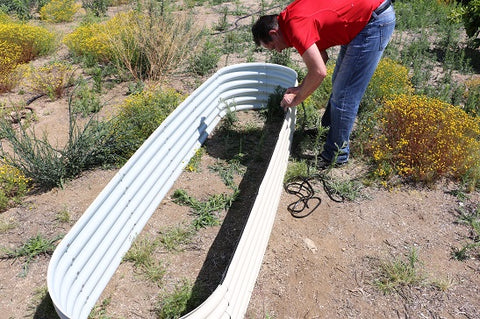
Do you live in a small apartment, but you dream that food can be cooked or eaten in a comfortable home? In cities, planting plants is not as difficult as you think. In the indoor environment or on the balcony, you will enjoy a lot of fruits and gardens. To have your own garden, you don't need a backyard.
There are 5 kinds of plants in your apartment, so you can harvest your own organic food.
- Salad vegetables
Salad's favorite is fast-growing shallow root plants, including lettuce, spinach and sesame. As long as they get enough water for their growth conditions, they will not be too cynical.
- Mayer Citrus
D verrucous citrus trees are some of the easiest fruits to grow in containers. Indoor Meyer lemons perform well when the sun has some moisture for six to eight hours a day.
Put something under your flowerpot because the lemon tree provides a bold shape to cover your floors and furniture.
- Avocado
Avocados are what you need to grow. When you use up the avocados you bought from the supermarket, keep your big round pit in the center. Rinse the pit, then insert four toothpicks into the bottom of the pit, and hang them in a glass of water, with the bottom and tip on the water.
Place the glass on the lighted window and ensure that the water remains tapered. The roots will germinate in a few weeks and plant them in a pot of soil. If you plant a seed, gently leave the pot, but always in a sunny place, and then water it.
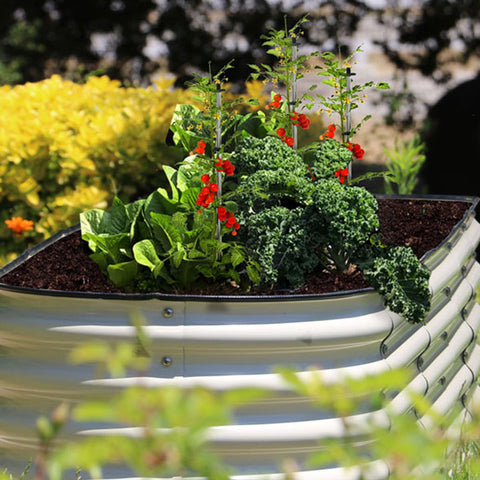
- Herbs
There is not much room for herbs, many of which are aromatic, making them an excellent choice for planting in apartments. Basil, mint, coriander, parsley, and even ginger are all good choices. If you like herbal cooking, it is difficult to keep steep food prices at a high price. Most herbs are easy to grow. Find a sunny place and remember it.
- Mushrooms
Usually, in your apartment, you don't want to see champagne rise. But the delicious supplement of each recipe is edible mushrooms. Two easy varieties you can grow at home include shiitake mushroom and pearl oyster mushroom.
You can spend some time planting mushrooms from scratch, so it's the easiest way to buy mushroom planting kits from Amazon or a professional supermarket.
5 Ways to Start Gardening in an Apartment
When you consider the growth rate and where you can plant it, you also need to consider the method of optimizing the growth space and the growth system you use. Usually, even in very small apartments, you can grow an amazing amount of food.
No backyard? No problem! Use these tips to add green space to the smallest deck, courtyard or terrace of the apartment.
- Garden windowsill
This is the simplest and most traditional way to grow food indoors. You can place the window frame or other small containers on the window frame inside or outside the window sill (depending on where you live).
The windows facing south provide the best light level, but some plants can grow on windows in either direction. The windows facing north will reduce the sunlight, but many shadows are still rising.
The simplest way to get started is to set containers on the existing threshold, but you can significantly increase the growth area by adding shelves on the window or using narrow shelf units on the window to accommodate more plants.

- Vertical garden
Whether indoors or outdoors, this method requires vertical thinking to make full use of space. You may think that you don't have any space for container plants, but do you take into account the vertical room with walls above and outside?
Shelves are the simplest form, even without DIY. You can use any old shelf to increase the number of plants in your home, whether you put it on the window or on the wall of your room.
However, shelving is not the only option. Other vertical gardening solutions include:
Planting in pockets (for example, hanging on the wall, or even on the door installed by the cloth shoe organizer).
Develop a tower or vertical structure to place (for example, an old plastic beverage bottle planting tower).
A-frame, consisting of old plastic pipes or drains, for example, for planting plants.
Climb plants or support them on sunny walls from containers on scaffolding planted on the base.
These are just a few creative ways to use vertical space in rooms with small horizontal space.
- Make a juicy bowl
Make your balcony the theme. If you only have room for a small table, create a juicy bowl filled with color. Fashion programs are highly efficient in maintenance, can be used in several rooms, and have very low betting requirements.
You must fill the bowl with a potting mixture designed for succulent plants to make a juicy bowl. Then choose a central decoration, usually a large plant with bright colors.
After being put into use, the edge of the bowl is designed using a mixture of succulent plants that can add texture and color to each other. It doesn't look crowded, but it is more abundant. You can plant each one together. Gravel or aquarium stones will spill any gaps.
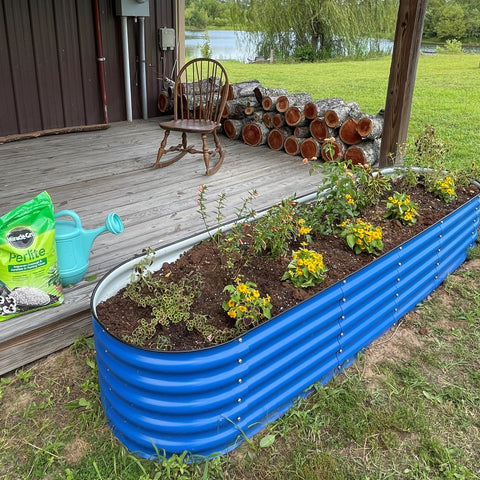
- Hide railings or walls
If you like to sit on the balcony and cannot tolerate privacy, you can add plants that cover the walls or railings, which can not only relax you aesthetically, but also prevent neighbors from watching.
The best way is to plant ivy, jasmine, exotic wine (such as passion plants) or edible plants (such as gourds or wild boars) in the garden of the apartment.
- Vanilla Garden
For the balcony without too much space, another wonderful urban garden option is herb garden. As a source of food and a unique green appearance, your herbs will double. Great choices include thyme, rosemary, basil and sage.
As long as your apartment balcony garden has 6-8 hours of direct sunlight every day, you can also grow a large number of vegetables. At the same time, many vegetables and some herbs need less sunlight to thrive. When you want to sprinkle rosemary on your mutton, you can save money and save your travel expenses in the grocery store.
If you want to plant a city garden, you must know these tips and techniques:
- Leave space for plants
No matter which container you choose, make sure your plants have enough space to expand. Ask your local nursery how much soil each plant needs.
Although researchers have established vegetables that do not need so much planting space, some still need soil. For example, for a single tomato plant, you need at least a 19 liter container.
- Keep soil potted
In your pot, don't use soil from the earth, but pot soil. The soil is lighter, better drained, and disinfected to destroy weed seeds and diseases that may damage plants.
- Don't drown the seedlings
Don't over water the plants. Don't over water the plants. Make sure to water the entire bottle every time you thoroughly drink it, but sprinkle any additional water under the container that is full of dishes.
- Add crystals to release water
A simple, cheap and practical solution is to store small crystals, which absorb and then gradually release water. If you travel frequently and worry about the health of your plants when you leave.
They absorb weight multiple times by adding water to these polymer particles. When they are mixed with the soil in the plant container and watered, the glass will slowly absorb and release water to keep the plants irrigated.
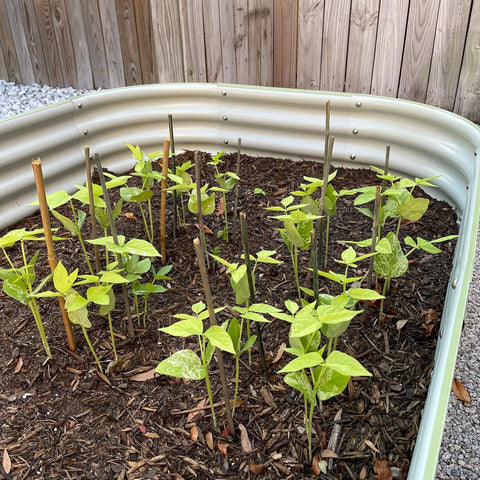
- Picking plastic flower pots
Use plastic cans instead of clay cans. Plants dry slowly in plastic because containers are not as brittle as pottery pots. In order to minimize the evaporation of water in the soil, five centimeters of organic mulch is placed on the top of the ground of the container.
conclusion
As the town gets bigger, the apartments get smaller and smaller. There is no reason not to build a lovely apartment garden to turn it into a 500 square meter real jungle, even if you live in a small apartment in the center of the concrete jungle.
After all, "going green" is not just an expression, sometimes it needs to be understood literally!
We found that planting residential gardens is one of the best investments of time and money. Plants make us healthier and happier! Gardening is not only a great way to break space, but also a great way to improve the health of your apartment and help you deal with food scraps responsibly.
Think of this as a starting guide for beginner apartment gardening.
